You are not alone if you think the May art world calendar is already looking jam-packed. Fresh on the heels of the Venice Biennale vernissage (more on that below) and the latest edition of Expo Chicago, the focus pivots to Frieze New York this week (and soon after to the TEFAF art fair and major New York auctions). Frieze opens May 1 for a VIP preview at The Shed, on the far west side of Manhattan in Hudson Yards, and runs through Sunday May 5. It is accompanied by a crush of satellite art fairs, strategically timed gallery show openings, parties, and other art-centric initiatives.
Noting that fair previews as a whole seemed to arrive slightly behind schedule this year, art advisor Liz Parks speculated that it may be indicative of “the administrative crush that galleries must be struggling under, against the backdrop of an incessant art fair schedule. What city are we on for the year? Ten?” Indeed, Frieze organizers bumped this year’s event up by more than two weeks, compared with last year when the fair slot was in mid-May.
Frieze now also owns Expo and the nearby Armory Show, having acquired both of those fairs last summer. While curiosity abounds about what post-acquisition changes might be in store for the art fair landscape, for Frieze New York, at least for the time being, it’s business as usual, albeit in the same scaled down post-pandemic format that it adopted in 2021.
Having started in 2012 in a bespoke tent on Randall’s Island in upper Manhattan, the fair later shifted to The Shed, where it now takes place across several floors rather than a single level. This year’s edition has 70 exhibitors, which is nearly identical to last year’s number—give or take one or two galleries.
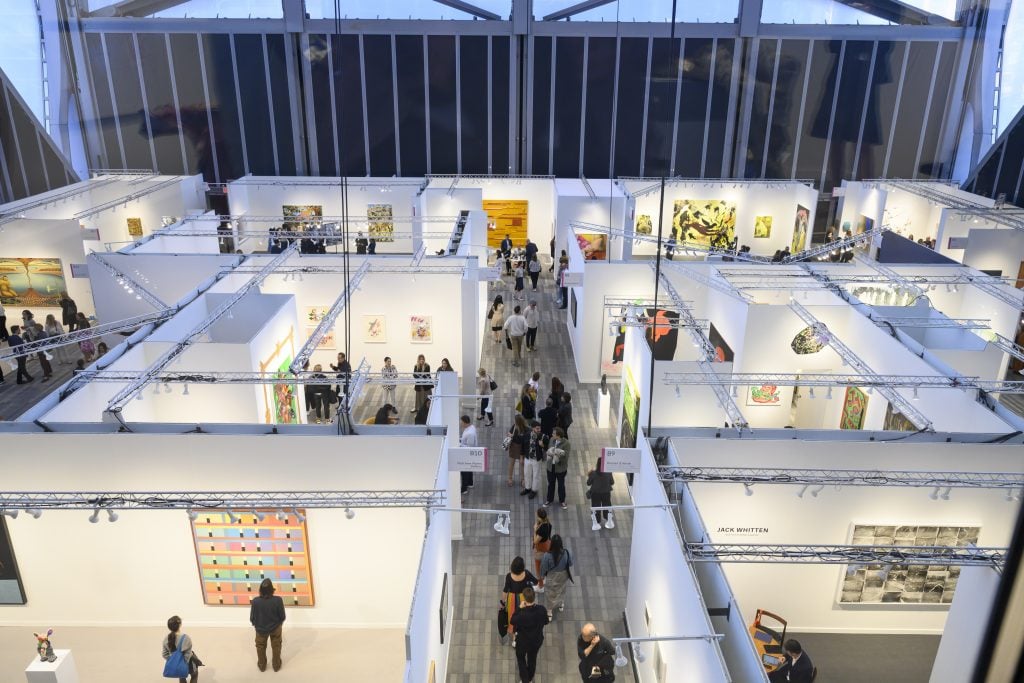
Frieze New York 2023. Photo by Casey Kelbaugh. Courtesy CKA and Frieze.
What can fairgoers expect or look forward to? “In terms of the presentations, generally speaking I would say it’s the usual suspects of artists, with the works selected possessing a dash more color, pizzazz and shininess that is typical of the Frieze aesthetic,” said Parks. “Figuration appears to be on the wane but is still present, often in the form of bodies against the backdrop of an abstract swirl thought-loop indicative of our chaotic times, while pure abstraction appears to be on the rise again, perhaps as a means of hitting the pause button.”
Amid continuing uncertainty and mixed signals about the global economy and how it’s impacting collector sentiment and the health of the broader art market, the mood from exhibitors, advisors, and collectors we spoke to struck a decidedly optimistic and decisive tone. “Over the last year, some of my clients have been exceptionally optimistic with their collecting habits and have been willing to take risks, experiment, and learn about new artists,” said art advisor Amanda Schmitt, adding: “I can’t say that there’s an overall or consistent tone as all of my clients are different and moods change as fast as the weather.”
New York-based art collector and publisher Larry Warsh is finding the breakneck speed of fairs disconcerting, especially at a time of an arguable downturn and what he terms “a more careful analysis of money and value. It means a lot of the artists will not be able to sustain their artificial values that have been created in the last couple of years. There’s no fundamentals. if I was in the financial world I’d say ‘where are the fundamentals? Where is the art history?’”
What is his approach or current mood about buying? “It is basically buy history and creativity. Don’t buy market darlings and at the end of the day buy what you like,” he said.
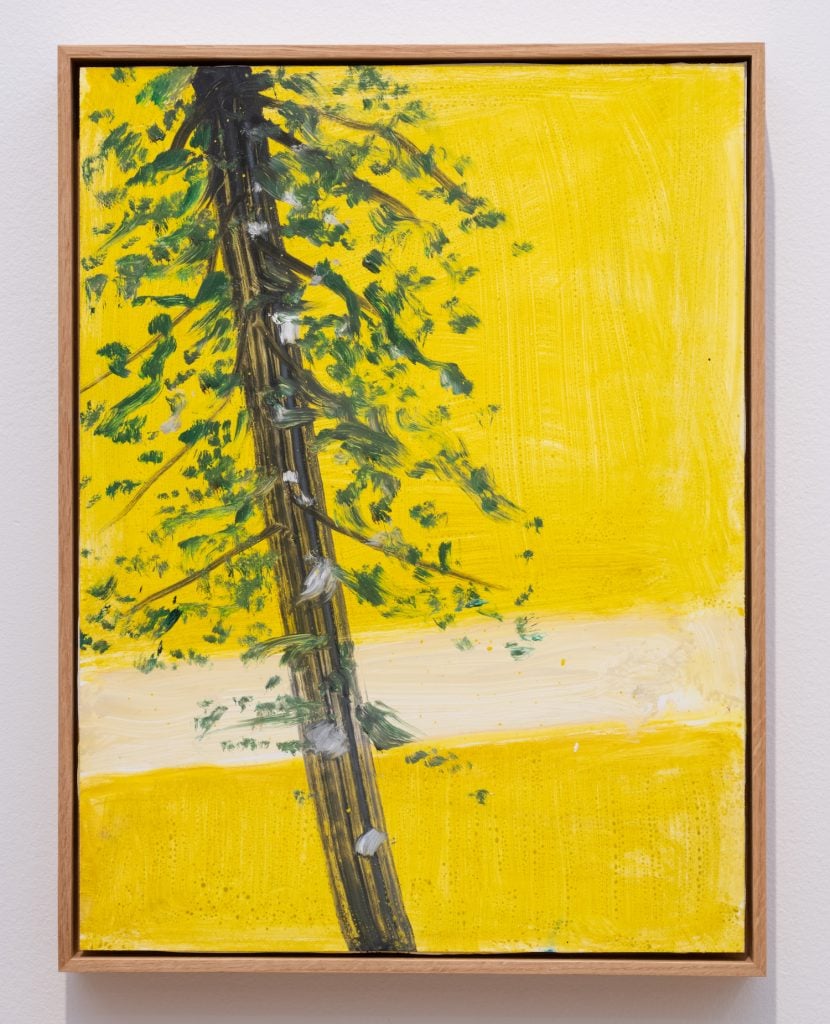
Alex Katz, Study for Tree 4 (2023). Image courtesy the artist and Thaddaeus Ropac Gallery.
The Venice Effect
If you’re one of the hordes of art lovers who recently descended on Venice for the opening of the 60th Biennale Arte you have likely picked up on a knock-on effect everywhere at Frieze, constituting something of a mini-biennale. With the unveiling of selected artists from pavilions all over the world still fresh in viewers’ minds, many dealers have opted to move forward with that momentum in their booth selections.
With an eye toward selecting works by artists that represent significant developments or “focal moments,” art dealer Thaddaeus Ropac told Artnet: “With this being a Venice Biennale year and Alex Katz and Martha Jungwirth having opened institutional exhibitions of new works there to coincide, we wanted to showcase and make available to collectors here some of their fantastic works made during their extraordinary recent artistic output.”
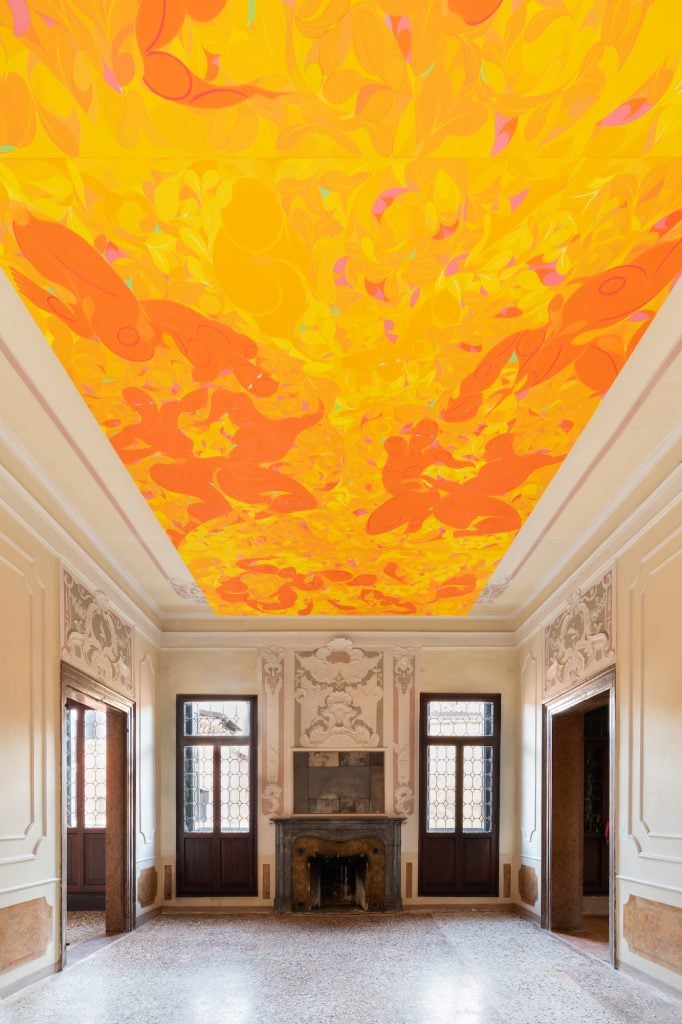
Tunji Adeniyi-Jones, Celestial Gathering (2024) installation view at the Nigeria Pavilion at the Venice Biennale. photo Natalie Miller.
Katz’s Ocean 5, (2023) is from the artist’s recent body of water paintings. A group of these oceanscapes is currently on view at the Fondazione Giorgio Cini in Venice as part of Katz’s monographic exhibition “Claire, Grass and Water”, presenting all new work following on from his acclaimed Guggenheim retrospective in 2023. Jungwirth, meanwhile, currently has a solo exhibition at the Galleria Palazzo Cini in Venice. A new work by the Austrian artist, Ohne Titel (2024), is presented at Frieze to coincide with the show.
There are plenty of other booths are leading with artists participating in this year’s Venice Biennale, including Tunji Adeniyi Jones, Etel Adnan, Jessica Rankin, Elias Sime and Julian Creuzet. Frieze even highlighted the trend with a recent story titled “Double Vision: Artists at the 60th Venice Biennale and Frieze New York 2024.”
Spotlighting Women Artists From Latin America
The so-called Venice effect can also be seen in wider thematic synergies. “Without a doubt, some of the most exciting works at the fair will be by Latin American women artists,” said Schmitt, who told Artnet she is advising on works by Rosana Paulino, Sonia Gomes and Marina Perez Simão (Mendes Wood), Beatriz Milhazes and Valeska Soares (with Fortes D’Aloia & Gabriel), and Vivian Suter (at Proyectos Ultravioleta).
“Milhazes in particular is someone who is fresh on my mind after seeing her exhibition at the Applied Arts Pavilion in the Venice Biennale. In many ways, her paintings both encapsulate the feel of the entire Biennale and also acted as an extraordinary exclamation point towards the end of the Arsenale,” said Schmitt.
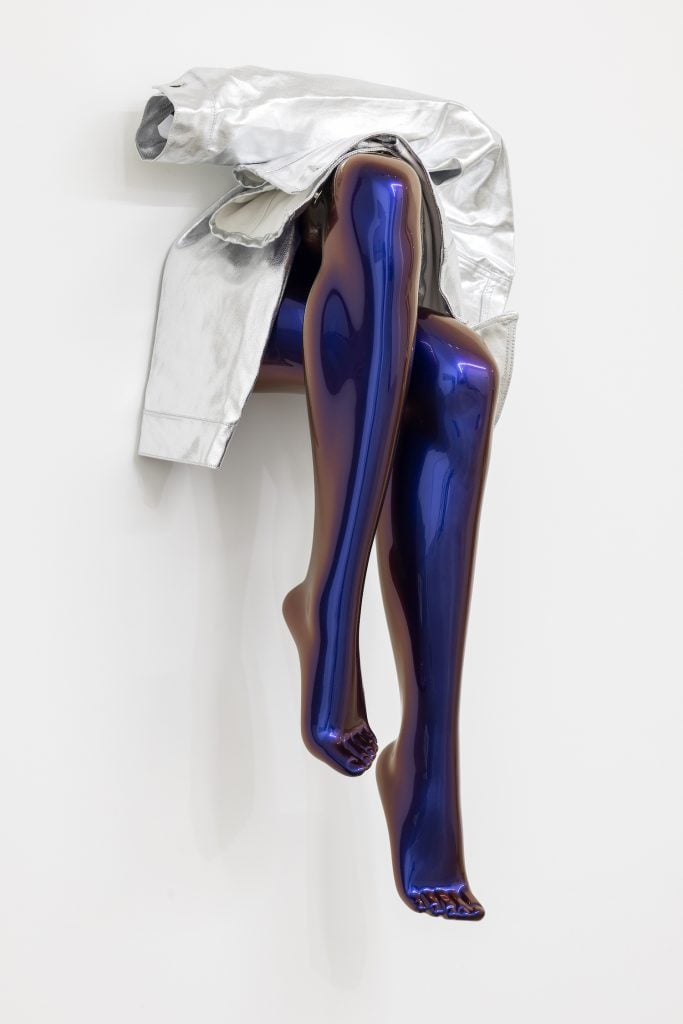
Sylvie Fleury, You Got the Silver No2, (2023). Image courtesy the artist and Spreuth Magers and Karma.
Solo Shows Take Center Stage
While solo booth presentations have always been an important element of the fair, their presence is particularly pronounced and robust this time around. These include Dewey Crumpler at Jenkins Johnson, who explores Black oppression and subjugation in his paintings. In the artist’s “Tulip” series he “symbolizes African bodies through the tulip, both displaced from their original environment and resilient amidst adversity,” according to a statement from the gallery. Crumpler, who served as an associate professor emeritus of painting at the San Francisco Art Institute from 1989 to 2022, has taught artists such as Kehinde Wiley and Deborah Roberts.
Other top-flight solo shows to look for include Sylvie Fleury at Karma International and Sprüth Magers shared booth, Kaveri Raina at Casey Kaplan, Sterling Ruby at Gagosian, Hiroshi Sugito at Tomio Koyama Gallery, Leo Valledor at Silverlens, and Haegue Yang at Kukje Gallery.
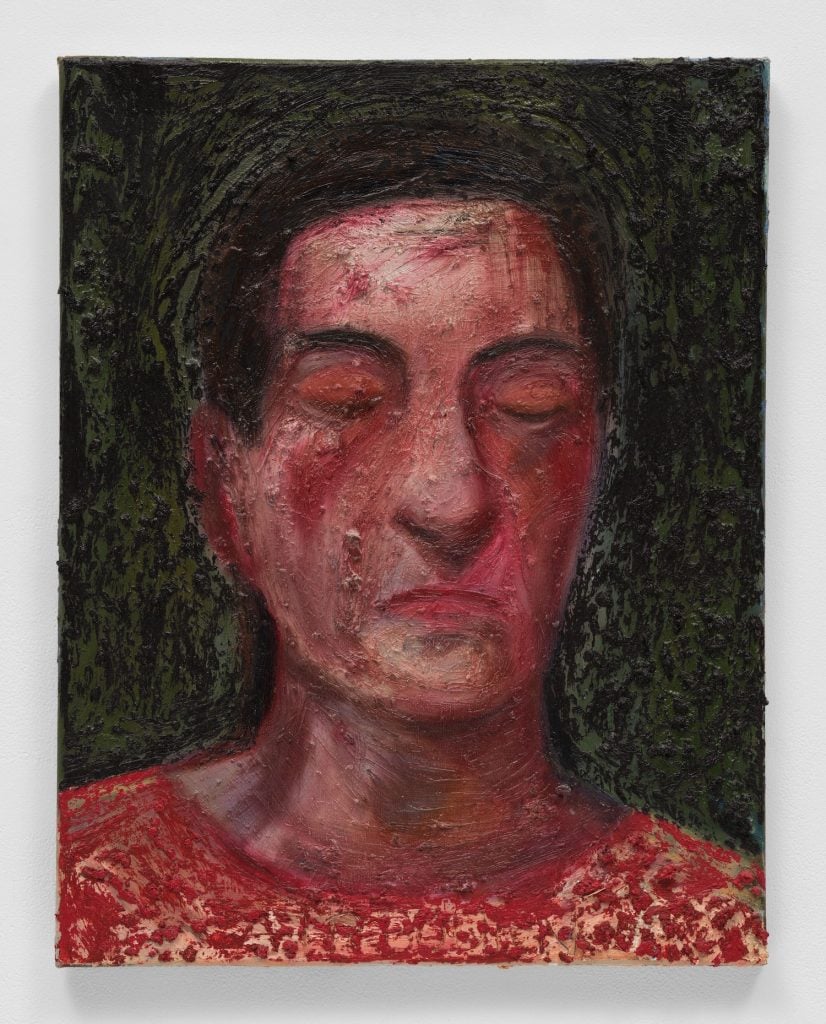
Nicole Eisenman, Emerged, Not Me (2023). © Nicole Eisenman. Image courtesy the artist and Hauser & Wirth. Photo by Thomas Barratt.
Museum Shows & Market Moments
In addition to highlighting Biennale artists, Ropac, whose gallery represents the Robert Rauschenberg estate, is gearing up for the centennial of the artist’s birth next year. Along with a show on view in the London gallery surveying the artist’s rarely exhibited ROCI (Rauschenberg Overseas Cultural Interchange), the gallery will display Copperhead-Bite XII / ROCI CHILE, (1985) at Frieze. It will also show work by James Rosenquist, whose monumental painting The Geometry of Fire (2011) just joined the collection at MoMA and is prominently on view inside the museum entrance.
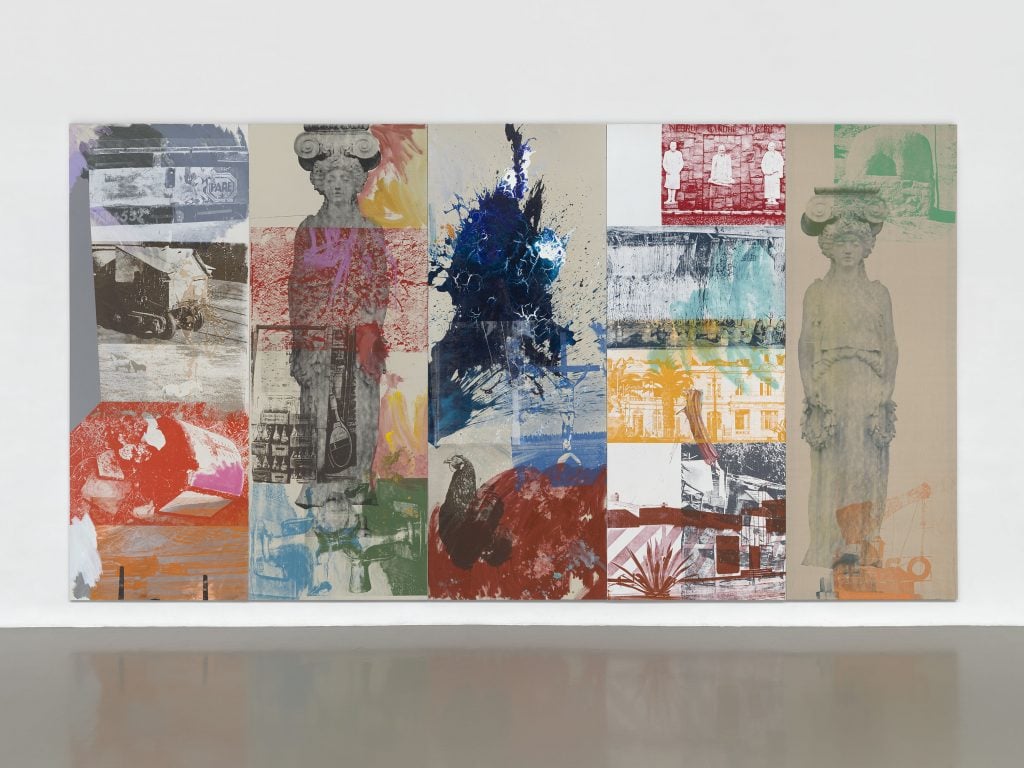
Caryatid Cavalcade I / ROCI CHILE (1985). Courtesy Thaddaeus Ropac gallery, London · Paris · Salzburg · Seoul, © Robert Rauschenberg Foundation / ARS, New York 2021.
Mega gallery Hauser & Wirth is spotlighting artists in its roster that have major museum exhibitions this year. They include Ed Clark (Turner Contemporary), Nicole Eisenmann (Museum of Contemporary Art in Chicago), Zoe Leonard (Philadelphia Museum of Art), Glenn Ligon (The Fitzwilliam), Jenny Holzer (Guggenheim), and Roni Horn (Museum Ludwig in Cologne Germany and the Louisiana Museum of Art in Copenhagen, Denmark).
Clark’s work in particular seems to be having a moment. Advisor Amanda Schmitt told Artnet she’s looking to place a Clark painting in one of her client’s collection. “I really zoned in on his work when Hauser & Wirth did its show, ‘The Big Sweep’ last year. His palette is at once dissonant and harmonious and his broad, broom-size brushstrokes convey remarkable visual eloquence. With both Hauser & Wirth and White Cube set to showcase his work at the fair, I anticipate that it won’t just be me looking to acquire a Clark,” she said.
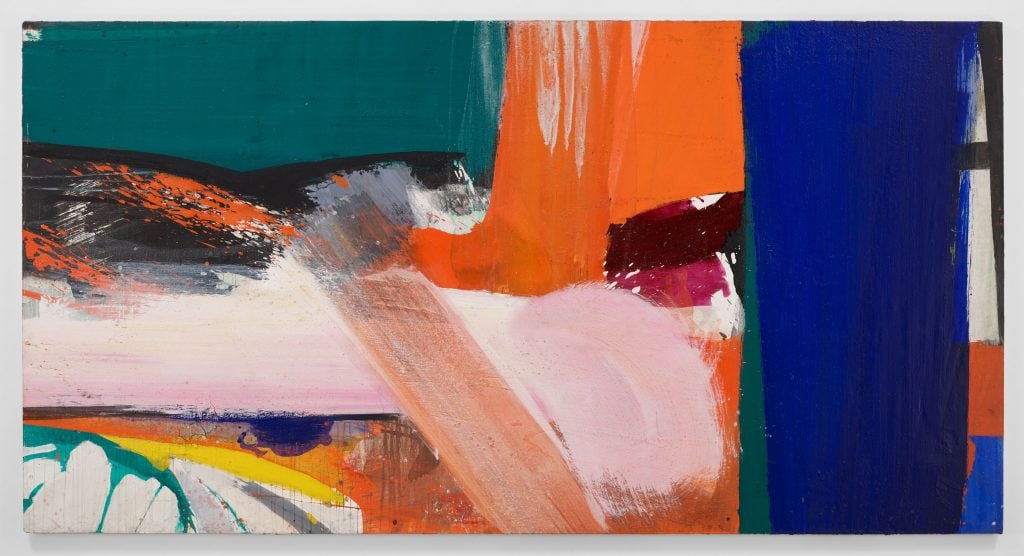
Ed Clark, Locomotion (1963). © The Estate of Ed Clark. Courtesy the Estate and Hauser & Wirth. Photo: Thomas Barratt.
Another must-see show in nearby Chelsea is a rare presentation of works by Eva Hesse comprised entirely of museum loans, works that almost never travel and have not been seen together in half a century because of their fragility.
The Hesse exhibition is one of four solo shows of women artists that will fill Hauser’s 22nd Street flagship gallery: a new body of works by Rita Ackermann; a show of Mary Heilmann’s works on paper; and Jennifer Rochlin’s first show with the gallery, a series of her in-demand painted pots.
The throng of opening parties, many of which are on Thursday May 2, will take over Chelsea and other gallery-centric neighborhoods. Said Parks: “Toss a rock anywhere, in any direction, on Thursday night and you’ll hit an art party.”
Follow Artnet News on Facebook:
Want to stay ahead of the art world? Subscribe to our newsletter to get the breaking news, eye-opening interviews, and incisive critical takes that drive the conversation forward.


